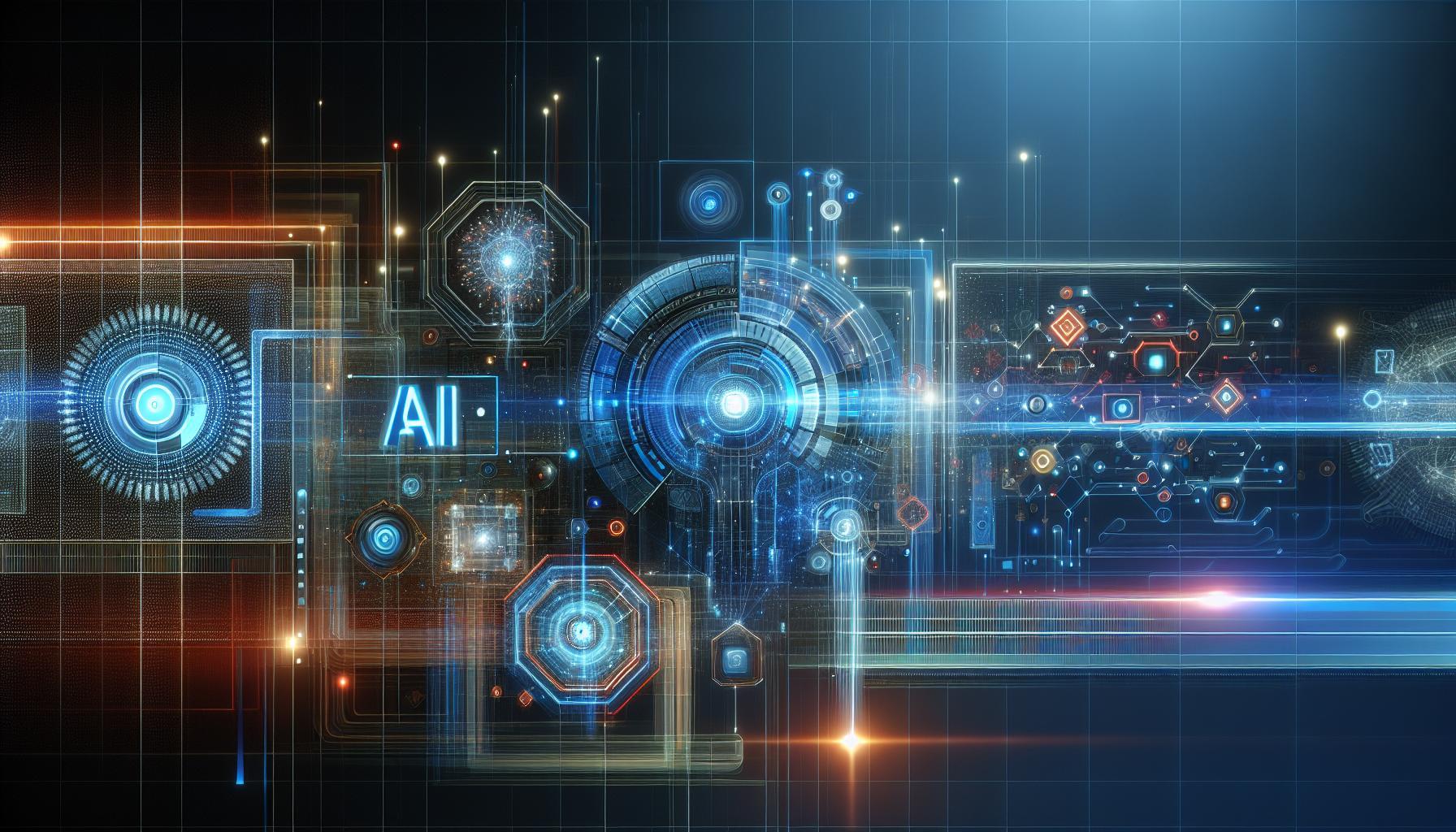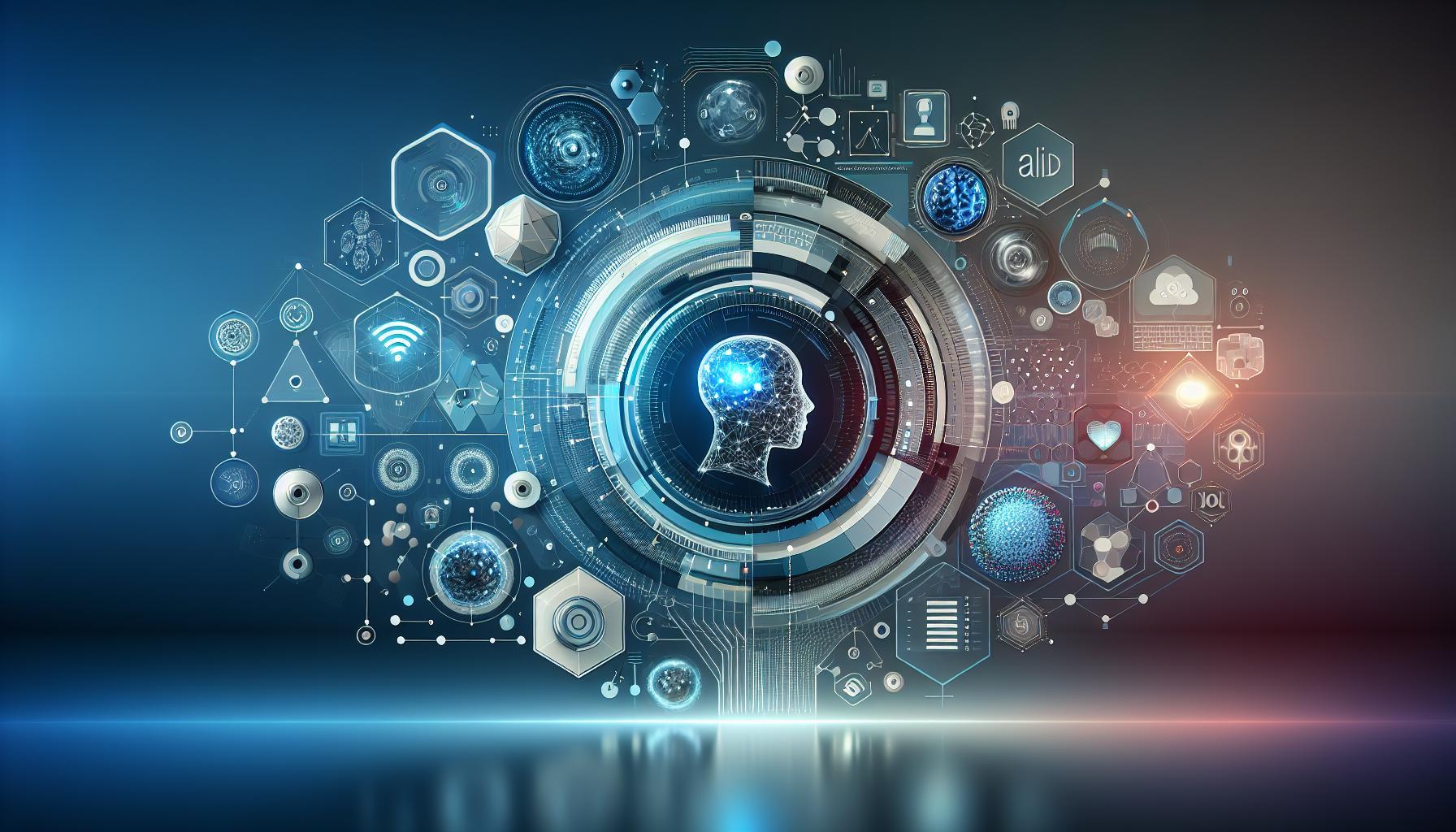As artificial intelligence propels creativity into new realms, the question arises: can Janitor AI, known for its conversational prowess, extend its capabilities to image generation? Understanding this potential is crucial, as it highlights the versatility and scope of AI technology, reshaping how we conceive creative expression in the digital age.
Understanding Janitor AI: What It Is and How It Works
Janitor AI stands out in the rapidly evolving landscape of artificial intelligence, particularly due to its innovative blend of chat capabilities and creative outputs. Designed to respond dynamically to user interactions, this AI not only engages in conversation but also has the potential to generate images, showcasing its multifaceted programming. Understanding how Janitor AI operates offers valuable insights into its applications, especially in creative fields.
At its core, Janitor AI uses sophisticated machine learning algorithms that enable it to process and understand natural language. This allows the system to engage in meaningful dialogues, adapting to the context and flow of conversations. As users interact with Janitor AI, it learns from these engagements, enhancing its ability to produce relevant and contextually appropriate responses. When prompted about its creative capabilities, particularly in generating images, Janitor AI can produce visual representations based on the descriptors provided in the chat. This dual functionality—textual interaction and image generation—positions Janitor AI as a unique tool for creative expression.
Key Features of Janitor AI
- Natural Language Processing: Enables fluid conversations with users.
- Learning Capabilities: Continuously improves its responses based on user interactions.
- Image Generation Potential: Translates textual prompts into visual content, merging verbal and visual creativity.
Additionally, using Janitor AI for generating images can involve several practical steps. Users can start by defining clear, descriptive prompts that outline the desired image concepts. For example, a simple request like “Imagine a futuristic city at sunset” can yield diverse interpretations, showcasing Janitor AI’s capacity for creativity. Users can also experiment with different styles or themes, pushing the boundaries of what the AI can conjure.
In summary, Janitor AI is not just a text-based conversational agent but a comprehensive tool that bridges communication and creativity. Its ability to generate images adds an intriguing layer to its functionality, making it an ideal companion for artists, writers, and content creators looking to enhance their projects. By understanding how to effectively interact with Janitor AI, users can unlock its full potential in generating captivating visual content, propelling their creative endeavors forward.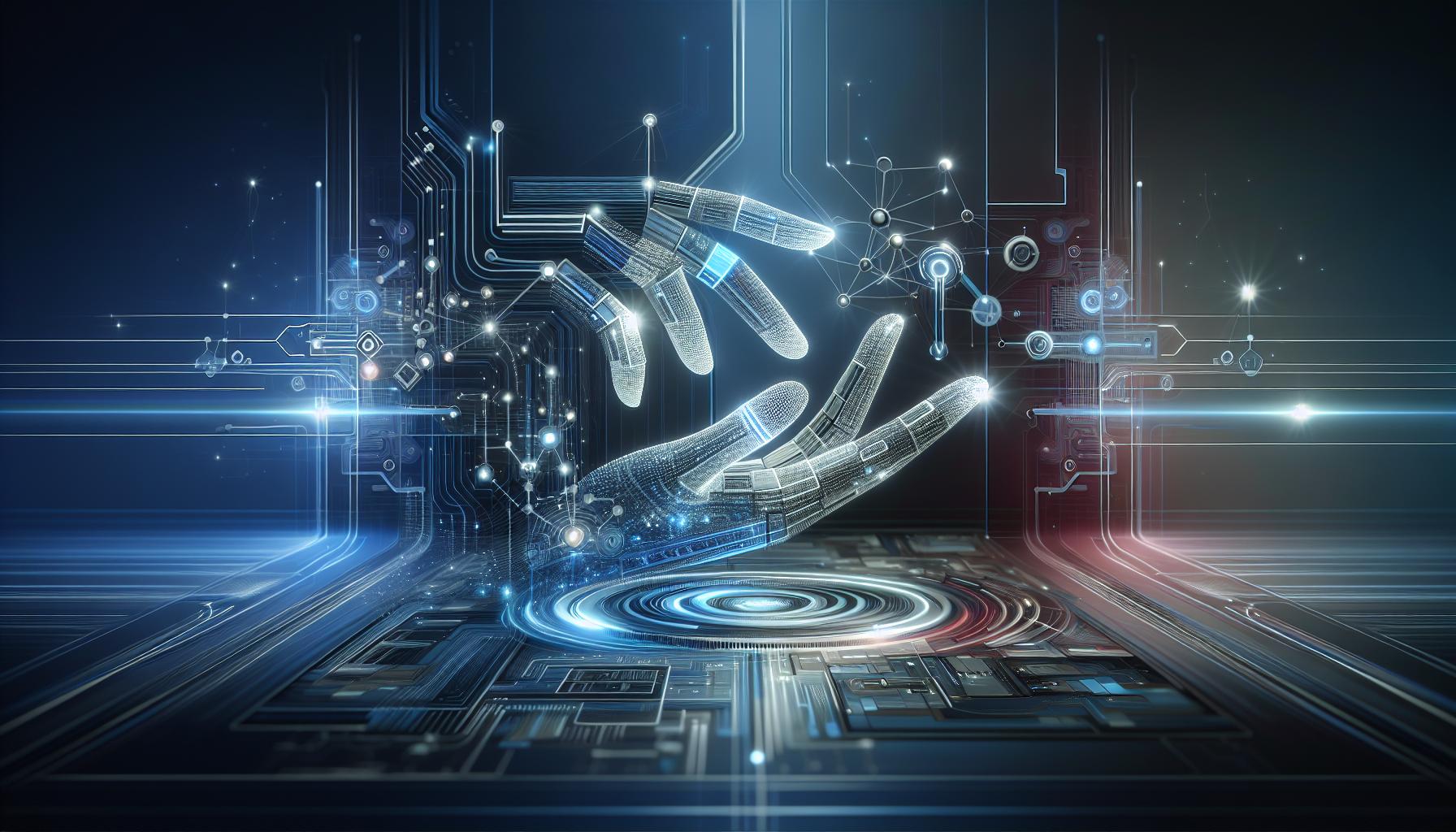
The Basics of Image Generation: A Look at AI Technology
In today’s fast-paced digital landscape, artificial intelligence (AI) is transforming the way we create and interact with visual content. The emergence of AI-driven image generation technologies is making it easier for individuals—from artists to marketers—to bring their ideas to life with unprecedented speed and creativity. Leveraging advanced algorithms, these tools can produce visually compelling images based solely on textual descriptions, allowing for a seamless blend between imagination and execution. Understanding how these technologies work is essential for anyone looking to utilize AI for creative endeavors.
How AI Image Generation Works
AI image generation relies on sophisticated machine learning models trained on vast datasets of images and corresponding textual descriptions. This training process enables the AI to identify patterns and relationships between words and visual elements. For instance, when users provide a prompt—like “a sunset over a mountain”—the AI sifts through its learned knowledge to synthesize a brand-new image that represents this description. This process typically involves several key steps:
- Text Processing: The AI analyzes the input text to understand context and specific elements.
- Feature Extraction: It identifies visual features associated with different concepts within the text.
- Image Synthesis: The AI generates the image by combining the identified features into a cohesive visual.
Some of the most notable AI image generators include platforms like DeepAI, which offers a free online tool that caters to various creative needs, and Google’s Gemini, featuring Imagen 4 technology renowned for its high-quality outputs. These resources empower users to generate stunning images quickly and effortlessly, whether for professional projects or personal expression.
Practical Applications of AI Image Generators
The versatility of AI image generation is reshaping multiple industries. Content creators, advertisers, and entrepreneurs are increasingly incorporating these technologies into their workflows. For instance, marketers can leverage AI-generated visuals for engaging social media campaigns or website content without the need for extensive design skills. Furthermore, artists and designers can explore new creative avenues by experimenting with different prompts to see unique interpretations of their ideas.
The ability of AI, including tools like Janitor AI, to produce high-quality imagery opens up numerous possibilities for innovative applications. As users explore these tools, they can:
- Create custom graphics for branding.
- Generate illustrations for storytelling.
- Visualize concepts before finalizing designs in traditional software.
By tapping into the power of AI image generators, individuals and businesses alike can harness creativity while saving time and resources, exemplifying the growing relationship between technology and artistry.
Creative Possibilities: Can Janitor AI Produce Original Art?
Janitor AI stands out in the world of creative technology by harnessing the power of artificial intelligence to generate visually stunning images. Users are increasingly curious about whether tools like Janitor AI can not only replicate existing styles but also create entirely original artwork. This question is integral to understanding the broader creative landscape of AI, as it blurs the lines between human artistic expression and machine-generated creativity.
One of the most compelling aspects of Janitor AI is its ability to produce unique images based on custom prompts provided by users. These prompts can encompass a wide range of subjects, allowing for tailored outputs that reflect individual preferences. For instance, a user might input descriptors such as “a serene mountain landscape during sunrise” or “a futuristic cityscape with flying cars.” The results often surprise and delight, showcasing an AI that not only understands the nuances of art but can also interpret them in innovative ways. This capability opens the door to an exciting array of applications, including:
- Personalized Art Commissions: Artists and hobbyists can leverage Janitor AI to create bespoke pieces that match specific themes or emotions.
- Marketing and Branding: Businesses can generate unique visuals for campaigns that stand out in a crowded market.
- Creative Inspiration: Writers, designers, and other creatives can use generated images as a starting point for their projects, sparking new ideas and directions.
Collaboration Between Humans and AI
The fusion of human creativity with AI capabilities leads to remarkable outcomes. Artists can use Janitor AI not just as a tool but as a collaborator, refining and reworking AI-generated images to align with their vision. This collaborative process fosters an environment where originality flourishes, as artists can draw inspiration from the unexpected results provided by the AI.
Real-World Examples
A recent discussion in the Janitor AI community highlighted a user who successfully integrated AI-generated art into their portfolio, which attracted attention from galleries and online platforms alike. This shift demonstrates the potential of AI to elevate an artist’s work rather than complicate it. Furthermore, with constant updates and improvements seen in Janitor AI, the quality of generated images continues to rise, pushing the boundaries of what is considered original art.
In summary, the creative possibilities with Janitor AI are vast and continually evolving. As the technology advances, it promises to enhance artistic processes while democratizing access to original content creation. Through exploration and experimentation, users can discover the depth of what Janitor AI can offer in the realm of image generation.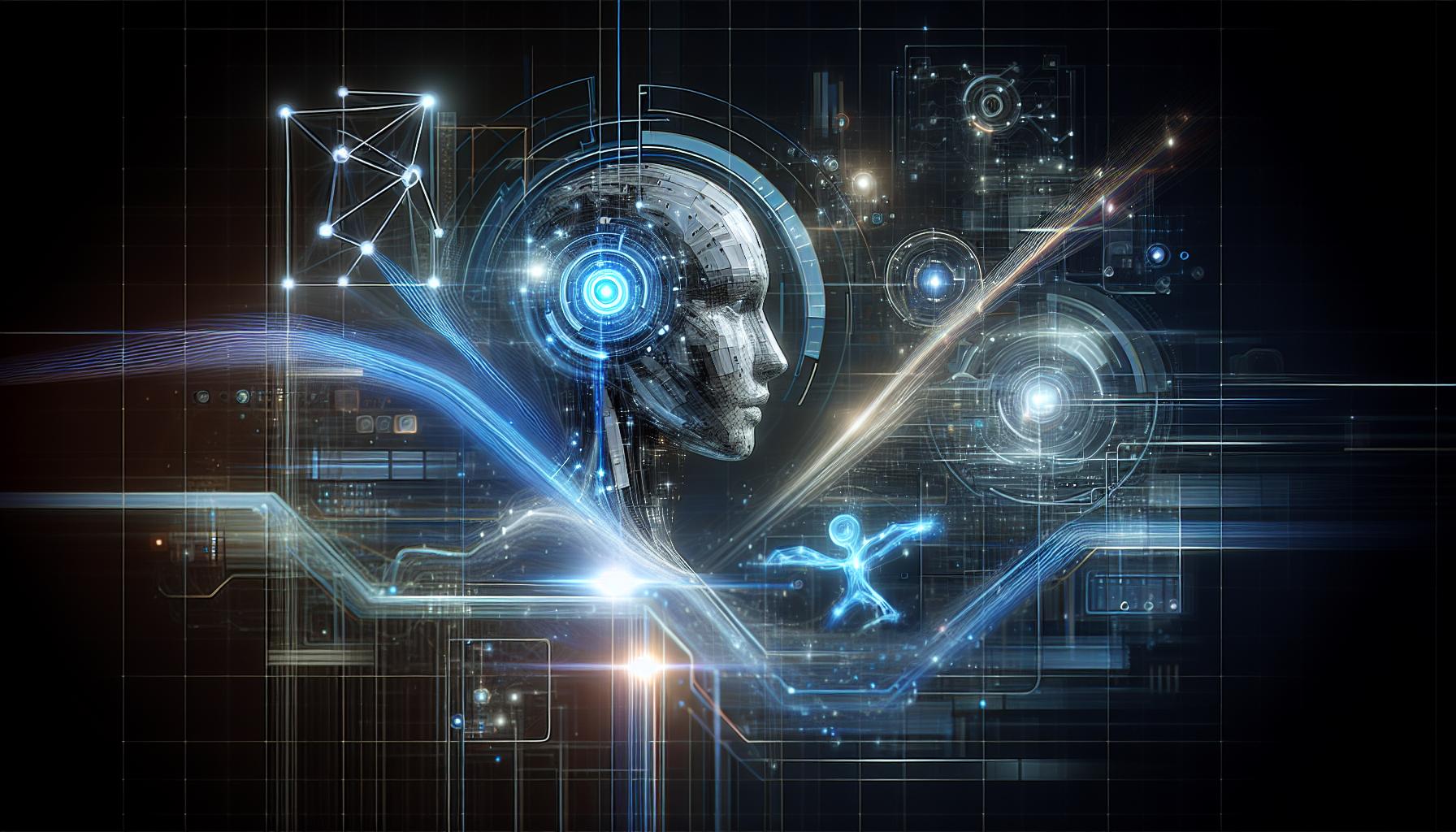
The Role of Training Data: How It Influences Image Creation
In the realm of artificial intelligence, the complexity of image generation hinges significantly on the quality and quantity of training data provided to the model. Training data serves as the foundational material that allows AI, such as Janitor AI, to produce compelling and contextually relevant images. The more diverse and comprehensive the training dataset, the better the AI can learn to recognize patterns, styles, and nuances in visual content, ultimately influencing the quality of the images it creates.
Why Training Data Matters
The performance of AI models in image creation is directly tied to the extensive datasets they utilize during their training phases. For instance, Janitor AI relies on a wide array of images that encompass various genres, styles, and characteristics. By exposing the model to countless examples, it learns to understand not only what an object is but also how it typically appears in different contexts. This knowledge empowers the AI to generate images that are not just replicas of the training images but are also original in their design and execution.
Characteristics of Effective Training Data
To optimize image creation capabilities, the training data must exhibit several key characteristics:
- Diversity: Including images from different cultures, settings, and objects allows the AI to generate content that resonates with a broader audience.
- Quality: High-resolution images provide clearer information that aids the AI in learning finer details, leading to more polished outputs.
- Relevance: The data should be contextually relevant to the tasks at hand, ensuring that the AI can make accurate predictions and generate appropriate visuals.
Through carefully curated training datasets, Janitor AI can refine its image-generating capabilities, resulting in creations that not only meet artistic expectations but also adhere to practical applications in industries such as marketing, advertising, and entertainment.
Real-World Implications
The implications of effective training data extend beyond mere aesthetic appeal. Industries leveraging Janitor AI’s capabilities have reported enhanced productivity and creativity in their projects. For instance, a marketing team might employ the AI to generate unique visuals tailored to specific campaigns without the need for extensive photo shoots. This efficiency demonstrates how well-constructed training datasets can transform AI into a vital asset for creativity and innovation.
In conclusion, the pivotal role of training data in AI image generation cannot be overstated. It lays the groundwork for models like Janitor AI to explore their creative capabilities extensively while producing high-quality, relevant images that address diverse needs in today’s digital landscape.
Comparing Janitor AI to Other Image-Generating AIs
In the realm of artificial intelligence, image generation tools have transformed how creatives and businesses envision their ideas. Among these tools, Janitor AI emerges as a noteworthy contender, boasting unique features that set it apart from established players like DALL-E, Midjourney, and Stable Diffusion. Users exploring whether Janitor AI can generate images might find its capabilities intriguing, especially in light of its recent updates and user feedback.
Janitor AI distinguishes itself through its focus on user interaction and customization. Unlike many traditional image generators that rely on more rigid prompts, Janitor AI leverages user input to create images that can evolve with specific needs. This adaptability is enhanced by a community-driven approach, where users can share and utilize custom prompts. Here are some notable aspects:
Key Comparisons with Other Image Generators
| Feature | Janitor AI | DALL-E | Midjourney | Stable Diffusion |
|---|---|---|---|---|
| User Customization | Highly customizable scripts and prompts | Moderate customization through prompts | Limited customization; preset styles | Highly scriptable with open-source options |
| Community Engagement | Strong community support; shared prompts | Less community-focused; mainly direct interactions | Community-driven with prompt sharing | Open-source community with extensive forums |
| Image Quality | Variable; improving with updates | High-quality, detailed outputs | High-quality, artistic outputs | Varies by configuration; can achieve high realism |
| Accessibility | Free access with optional subscriptions | Subscription model available | Subscription-based | Free with open-source models |
Another crucial differentiator lies in the accessibility of Janitor AI. Unlike DALL-E and Midjourney, which operate behind paywalls for enhanced features, Janitor AI caters to a broader audience with its free-to-access model. This democratization of creativity means that more users can experiment with image generation without the financial barriers often associated with premium solutions.
In conclusion, while other AI image generators may offer superior fidelity and artistic flair, Janitor AI holds its ground due to its strong community involvement and flexibility in customization. Its evolving capabilities, user-friendly interface, and unique approach to prompt handling significantly contribute to its standing amongst the competition, making it an appealing choice for those asking, “Can Janitor AI generate images?”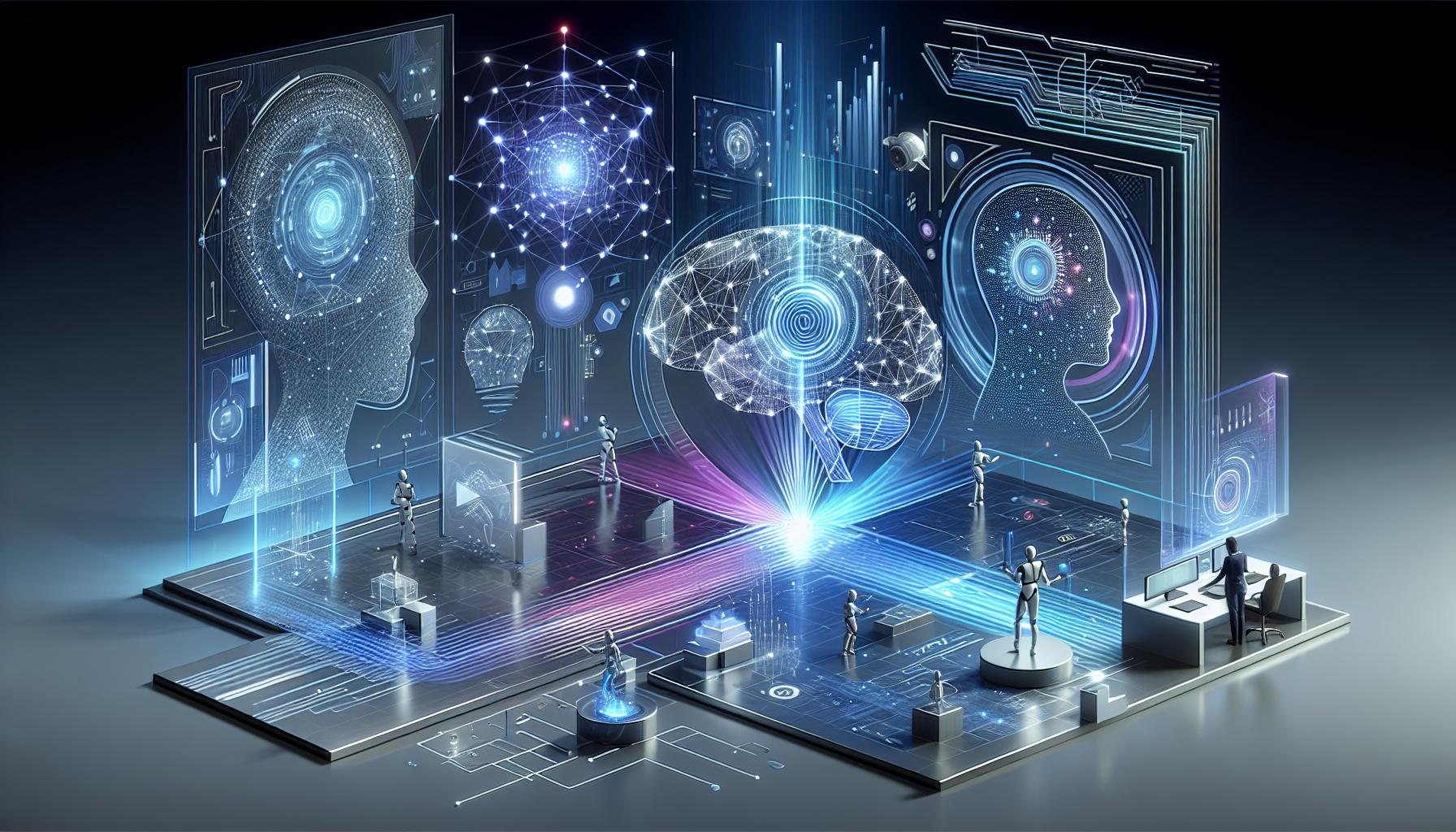
Practical Applications: Using Janitor AI for Your Creative Projects
Unlocking the potential of AI in creative projects has never been easier, and with tools like Janitor AI, you can elevate your artistic endeavors to new heights. Whether you’re a writer, artist, or content creator, Janitor AI opens up innovative pathways for generating images, brainstorming ideas, and enhancing your workflow. As we delve into practical applications, you’ll discover how this platform can be seamlessly integrated into various facets of your creative process.
Visualizing Concepts and Ideas
One of the most compelling uses of Janitor AI is its ability to generate unique visual content from textual descriptions. Imagine you’re developing a new character for your graphic novel or a vivid scene for your short story. By providing Janitor AI with detailed prompts, you can quickly produce images that reflect your vision. This not only saves time but also serves as a visual aid that can inspire and guide your creative decisions.
- Character Design: Input specific traits and characteristics to visualize your characters before committing to sketches.
- Scene Concepts: Describe the setting, mood, and action to generate scenes that can help you frame your narratives more effectively.
- Art Style Exploration: Experiment with different art styles through generated images, testing how your ideas might translate visually.
Enhancing Content Creation Workflows
For bloggers and marketers, Janitor AI offers a streamlined approach to content creation. By generating images that align with your written content, you can maintain a cohesive aesthetic across your platforms. This not only enhances visual appeal but also encourages reader engagement by supporting the text with relevant imagery.
To implement this, consider the following steps:
- Use Janitor AI to create custom headers or featured images for your blog posts.
- Explore image generation for social media posts that align with your branding and message.
- Integrate generated visuals in presentations or pitches to illustrate concepts effectively.
Collaborative Projects and Feedback
Janitor AI also shines in collaborative environments. When working with teams, the ability to quickly generate concepts can foster brainstorming sessions and enhance creative discussions. Share generated visuals with colleagues to gather feedback, making the creative process more iterative and inclusive. For instance, artists can present AI-generated designs for critiques, allowing for a more dynamic exchange of ideas.
In summary, leveraging Janitor AI’s image generation capabilities can significantly enhance your creative projects, from concept visualization to workflow optimization. By incorporating this innovative tool, you ensure your artistic process resonates with efficiency and creativity, paving the way for extraordinary outcomes in your work.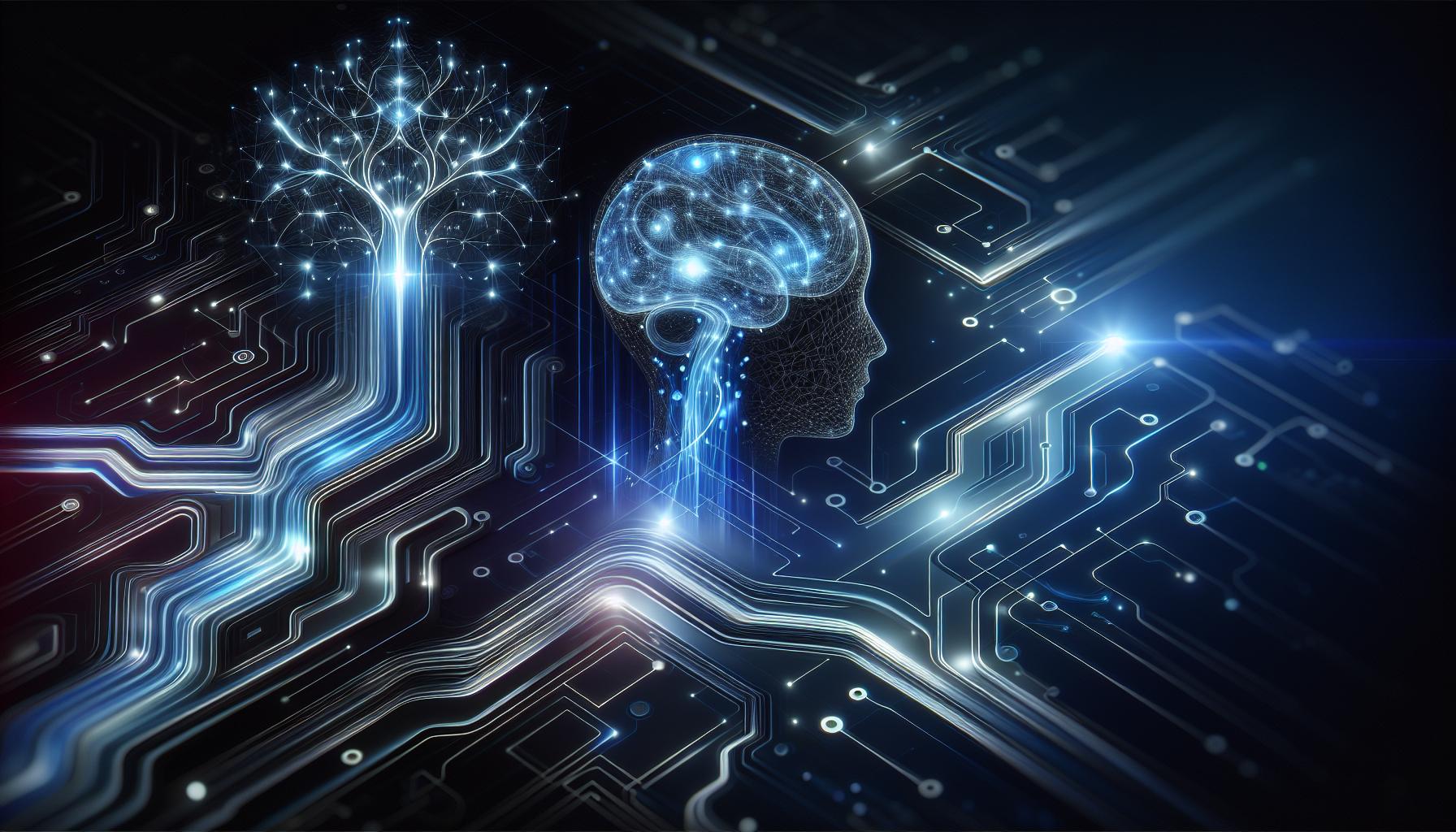
Limitations and Challenges: What Janitor AI Can’t Do
Despite impressive advancements in artificial intelligence, including tools like Janitor AI, there remain notable limitations and challenges that prevent these systems from fully replicating the nuances of human creativity and visual expression. While Janitor AI may be capable of generating images, the outcomes often lack the depth, context, and emotional resonance that human artists bring to their work. Understanding these constraints can help users set realistic expectations and explore supplementary tools and techniques to enhance their creative projects.
Understanding the Core Limitations
Here are some fundamental areas where Janitor AI struggles:
- Contextual Understanding: Janitor AI often lacks the ability to grasp complex narratives or themes behind an image. For instance, depicting a scene that not only looks visually appealing but also conveys a deeper message or emotional subtext can be challenging.
- Artistic Style Variation: While Janitor AI can mimic certain artistic styles, it may fail to produce original variations that deviate from existing paradigms. Human artists infuse their unique perspectives into their work, something the AI struggles to replicate consistently.
- Originality Issues: The AI operates within a learned database, potentially leading to repetitive patterns or derivative works rather than genuine innovation.
- Emotional Engagement: Art is often a reflection of personal experience and emotion. Janitor AI lacks personal experiences, which can lead to uninspired creations that fail to resonate on a human level.
Practical Examples of Challenges
The limitations of Janitor AI are not just theoretical but manifest in practical scenarios. For example, if tasked with generating an image of a bustling city street during a festival, the AI may produce a vibrant visual filled with color but might miss out on subtleties such as the ambiance of music, the collective joy among people, or the cultural significance behind the activities displayed. It could provide a visually stunning image, yet it may not evoke the same depth of feeling a human artist could achieve by grasping the essence behind the festival’s cultural heritage.
While tools like Janitor AI offer an exciting glimpse into the future of creative technology, recognizing their boundaries can lead to more effective use in conjunction with traditional methods. For example, artists could use Janitor AI to brainstorm initial ideas or create base images, but they may need to refine these outputs manually to truly capture the desired aesthetic and emotional depth.
By understanding where Janitor AI excels and where it falters, users can optimize their creative workflows more effectively, leveraging the best of both AI innovation and human artistry to achieve remarkable results.
User Experience: How to Interact with Janitor AI for Best Results
Interacting with Janitor AI can be an enlightening and creative experience, especially when seeking to harness its image generation capabilities. Understanding how to effectively engage with this tool can significantly enhance the outcomes of your projects. By optimizing your input, you can unleash the full power of Janitor AI to produce visually striking and contextually appropriate images.
To get the best results from Janitor AI’s image generation features, consider the following strategies:
1. Be Specific with Your Prompts
When you ask Janitor AI to generate images, clarity matters. Be explicit about the details you want to see. Instead of vague prompts like “a landscape,” try something like “a vibrant sunset over a mountain range with a lake reflecting the colors.” This specificity helps the AI understand your vision better, leading to more targeted results.
2. Experiment with Different Styles
Janitor AI can cater to a range of artistic styles. Don’t hesitate to request images in various formats—realistic, abstract, cartoonish, or impressionistic. For instance, you might ask, “Create a whimsical cartoon-style image of a cat in a spaceship,” followed by “Now, create a realistic portrait of the same cat.” This experimentation can yield diverse options that might inspire you further.
3. Use References
Providing reference images or detailed examples can significantly enhance the performance of Janitor AI. If you have specific styles or themes you like, including those in your prompts will help guide the AI. This approach not only aids in achieving your desired outcome but also limits the back-and-forth process typically associated with corrections.
4. Iterative Feedback
After generating an image, don’t hesitate to give feedback to Janitor AI. You can specify what you like and dislike about the output. For instance, if you appreciate the colors but feel the layout is off, you can express that as, “I love the color palette but would prefer a more centered composition.” This iterative process allows the AI to learn and adjust, leading to better results over time.
Implementing these techniques can transform your interaction with Janitor AI into a more productive and satisfying experience. Whether you are asking, “Can Janitor AI generate images?” or exploring its creative capabilities further, these practical steps can help you maximize the potential of this innovative tool.
The Future of AI Creativity: What Lies Ahead for Janitor AI
The rapid evolution of artificial intelligence is reshaping not only how we work but also how we create. As we explore the creative capabilities of Janitor AI, the question “Can Janitor AI generate images?” becomes increasingly significant. With advancements in generative AI models, we are on the brink of a transformative period in content generation, one where AI tools like Janitor AI can both replicate and inspire human creativity.
Enhancements in Generative Capabilities
Janitor AI is designed to augment human creativity rather than replace it. By leveraging deep learning algorithms and vast datasets, it can generate high-quality images from text prompts, providing users with an innovative tool to visualize concepts quickly. This capability allows professionals in various sectors—marketing, design, and entertainment among them—to brainstorm more effectively and develop unique visuals that resonate with their intended audience. The ability to create diverse content rapidly not only increases productivity but also nurtures a culture of experimentation and creativity in workplaces.
Real-World Applications and Implications
The potential applications of image generation through Janitor AI are vast. For instance, in the marketing sector, brands can quickly produce unique graphics for campaigns, testing different visuals without extensive resource investment. Similarly, in the gaming industry, developers can use Janitor AI to create concept art and character designs, greatly reducing the time between ideation and execution. Such applications illustrate how Janitor AI could facilitate a new dimension of creativity, allowing for more agile development cycles.
- Marketing: Generate promotional images tailored to different audience segments.
- Design: Create multiple iterations of product visuals for feedback.
- Entertainment: Develop storyboards or concept art in the early phases of production.
Looking Ahead: Collaboration Between Humans and AI
As AI tools like Janitor AI become more sophisticated, the collaboration between humans and machines will deepen. Organizations that embrace these technologies will likely experience enhanced innovation, as the synergy between human intuition and AI’s processing power leads to groundbreaking creative outputs. Moreover, training AI systems on diverse datasets ensures that the generated content reflects a variety of perspectives, making AI a valuable assistant in championing inclusivity in creative work.
In summary, the future of AI creativity, especially regarding Janitor AI’s image generation capabilities, promises not just efficiency but also a revival of creativity across industries. As we stand on the cusp of this new era, it is essential for professionals to explore how they can incorporate these tools into their workflows, ultimately redefining what creativity can achieve.
Frequently Asked Questions
Can Janitor AI generate images?
No, Janitor AI cannot generate images directly. Its capabilities are focused on text-based interactions, allowing users to create narrative elements or discussions rather than visual content.
Although it excels in text generation and responding to user inquiries, Janitor AI does not include image generation features. Users looking for visual content may need to explore other AI tools specifically designed for image creation, such as DALL-E or Midjourney.
What are the creative capabilities of Janitor AI?
Janitor AI is designed for generating engaging text-based content, including creative writing, character dialogue, and interactive storytelling, but it does not create visual art.
This tool is optimized for imagination and creativity through text. Users can develop narratives or roleplay characters in their stories, making it suited for writers and gamers looking for inspiration or assistance in crafting plots.
How can I use Janitor AI for storytelling?
You can use Janitor AI to brainstorm ideas, develop characters, and generate dialogue for your stories, enhancing your creative writing process.
By inputting prompts, you can receive detailed responses that help shape your narrative. This interaction allows for dynamic storytelling, where the AI can suggest plot twists or character developments, effectively acting as a collaborative writing partner.
Can I create characters with Janitor AI?
Yes, Janitor AI allows for the creation of characters through detailed prompts, enabling users to explore diverse personalities and backgrounds.
This feature helps writers flesh out characters with unique traits and motivations, enriching the storytelling process. You can ask the AI to provide character descriptions, backstories, and even dialogue, making it a valuable tool for character development.
Why does Janitor AI focus on text rather than images?
Janitor AI specializes in text-based tasks to help users enhance their writing and storytelling skills, which may explain its lack of image generation capabilities.
This focus allows it to excel in understanding language nuances, context, and creativity through text. By concentrating on textual interactions, Janitor AI can provide more effective and rich responses.
Can Janitor AI assist with brainstorming ideas?
Absolutely, Janitor AI is a powerful tool for brainstorming. It can generate a multitude of ideas based on your prompts, aiding in creative processes.
This makes it especially useful for writers, marketers, and creative professionals looking for inspiration. You can ask for themes, story arcs, or even character traits, effectively utilizing the AI to unlock new creative avenues.
What limitations does Janitor AI have in creative tasks?
While Janitor AI is robust in text generation, it lacks the ability to interpret complex instructions that involve visual creativity or generate multimedia content.
This limitation means that users seeking comprehensive creative solutions that include visual elements will need to consider combining Janitor AI’s text abilities with other tools designed for images or videos.
Future Outlook
As we conclude our exploration of Janitor AI’s creative capabilities, it’s clear that this tool offers intriguing potential in the realm of image generation. While Janitor AI primarily focuses on text-based interactions, its underlying technology hints at capabilities that could extend into visual creativity. By understanding how AI processes information and generates content, users can better appreciate the nuances of this evolving field.
We encourage you to delve deeper into the world of AI, experiment with different applications, and keep an eye on future advancements that may enhance creative output. The journey of discovery is just beginning, and every interaction with AI tools like Janitor AI fosters a greater understanding of their potential. Stay curious, engage with the community, and unlock the creative possibilities that AI has to offer!


